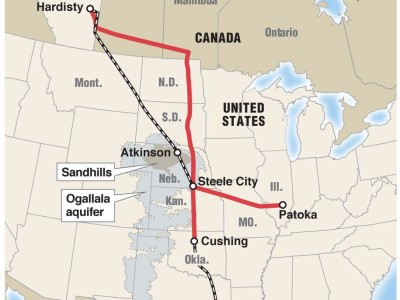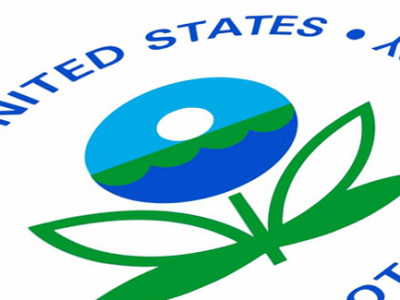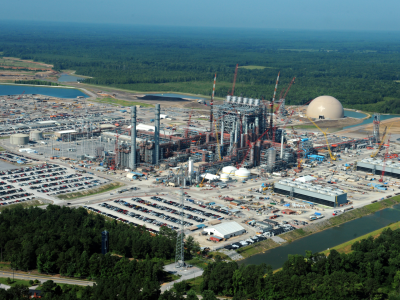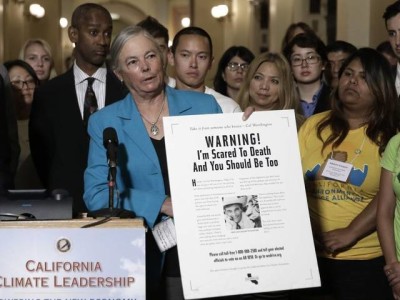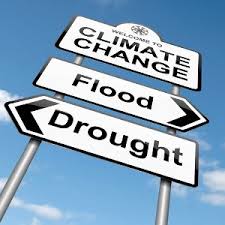Federal Climate Policy
Promises to Keep
In the run-up to the Paris talks, the major economies have all pledged carbon reductions.
With Saudia Arabia’s pledge last week to cut emission, all of the world’s major economies are now on board. In a nutshell, here is what they are promising. Except as noted, the target dates are all 2030. A number of countries have subsidiary promises in terms of percentage of renewable energy or of bigger cuts premised …
Continue reading “Promises to Keep”
CONTINUE READINGGoodbye, Keystone, Goodbye
After seven years, the project is history.
The President announced this morning that he would not approve the Keystone pipeline project. This wasn’t a huge surprise at this point of the game. Still, it’s a good time to take stock of the dispute. The fight was largely — but not entirely — symbolic. With falling oil prices, the alternative of rail transport …
Continue reading “Goodbye, Keystone, Goodbye”
CONTINUE READINGClean Power Plan Litigation Kick-Off
Flood of lawsuits follows publication of EPA rules to regulate power-plant GHGs
*Updated: Nov. 17, 2015* On Friday, October 23, 2015, the Federal Register formally published EPA’s rules to control greenhouse-gas emissions from fossil-fuel-fired power plants under the Clean Air Act. I described the basics of the rules after EPA released the unofficial text in August. The final text of the rule to regulate new and modified …
Continue reading “Clean Power Plan Litigation Kick-Off”
CONTINUE READINGWhat Do You Know About EPA? Test Your Knowledge.
Much of what most people think they know about EPA is wrong.
This test involves a few basics about EPA. See how much you know. 1. What President established EPA? A. Kennedy. B. Johnson C. Nixon D. Clinton 2. When is cost a factor in issuing EPA regulations? A. Whenever allowed by law. B. Under Republican Presidents. C. Only for minor regulations. D. …
Continue reading “What Do You Know About EPA? Test Your Knowledge.”
CONTINUE READINGExploring Potential Challenges to EPA’s New Source Performance Standard: PART III
CCS for coal power plants, but not natural-gas power plants?
This post is the third in a mini-series (see first and second posts) exploring likely legal challenges to the New Source Performance Standard (NSPS) for power-plant greenhouse gas emissions under Clean Air Act § 111(b), and how those challenges might affect the Clean Power Plan. In my first post on EPA’s New Source Performance Standard …
Continue reading “Exploring Potential Challenges to EPA’s New Source Performance Standard: PART III”
CONTINUE READINGIs CCS the “best” system of emission reduction for coal-fired power plants?
Exploring Potential Challenges to EPA’s New Source Performance Standard: PART II
This post is the second in a mini-series (see first post) exploring likely legal challenges to the New Source Performance Standard (NSPS) for power-plant greenhouse gas emissions under Clean Air Act § 111(b), and how those challenges might affect the Clean Power Plan. In my first post on EPA’s New Source Performance Standard (NSPS) for …
Continue reading “Is CCS the “best” system of emission reduction for coal-fired power plants?”
CONTINUE READINGIs Carbon Capture & Sequestration (CCS) the Biggest Threat to the Clean Power Plan?
Exploring potential challenges to EPA’s New Source Performance Standard: PART I
This post is the first in a mini-series exploring likely legal challenges to EPA’s New Source Performance Standard (NSPS) for power-plant greenhouse gas emissions under Clean Air Act § 111(b), and how those challenges might affect the Clean Power Plan. I will leave detailed exploration of the Clean Power Plan for later posts, but suffice …
CONTINUE READINGCalifornia’s Effort To Set 2030 Greenhouse Gas Emissions Fails
What are the implications for ongoing climate efforts?
In another, even bigger setback for the environmental community in California, SB 32 (Pavley), the bill to set greenhouse gas targets for 2030 and 2050, was pulled yesterday and will be tried again next year. The winners are the oil companies, who face tough regulations and competition from California’s climate efforts. The failure is a …
Continue reading “California’s Effort To Set 2030 Greenhouse Gas Emissions Fails”
CONTINUE READINGThe Shadow Price of Carbon
Merging Cost-Benefit Analysis and Feasibility Analysis
The U.S. government has devoted a lot of time and effort to estimating the social cost of carbon. This is basically a standard exercise in cost-benefit analysis, following a familiar three-step process: 1. Impacts. Figure out the physical impacts of the emissions. This involves setting up some emissions scenarios and then running computer simulations to …
Continue reading “The Shadow Price of Carbon”
CONTINUE READINGThe Top Ten Reasons Trump Should Endorse a Carbon Tax
A bold move, if Trump is brave enough to go there.
Not that he’s asked for my advice, but here are ten powerful reasons why Donald Trump should endorse a carbon tax: 10. It would be completely inconsistent with his past positions. 9. It would shock the GOP establishment. 8. It would shock the media. 7. He’s already endorsed a tax increase for …
Continue reading “The Top Ten Reasons Trump Should Endorse a Carbon Tax”
CONTINUE READING




